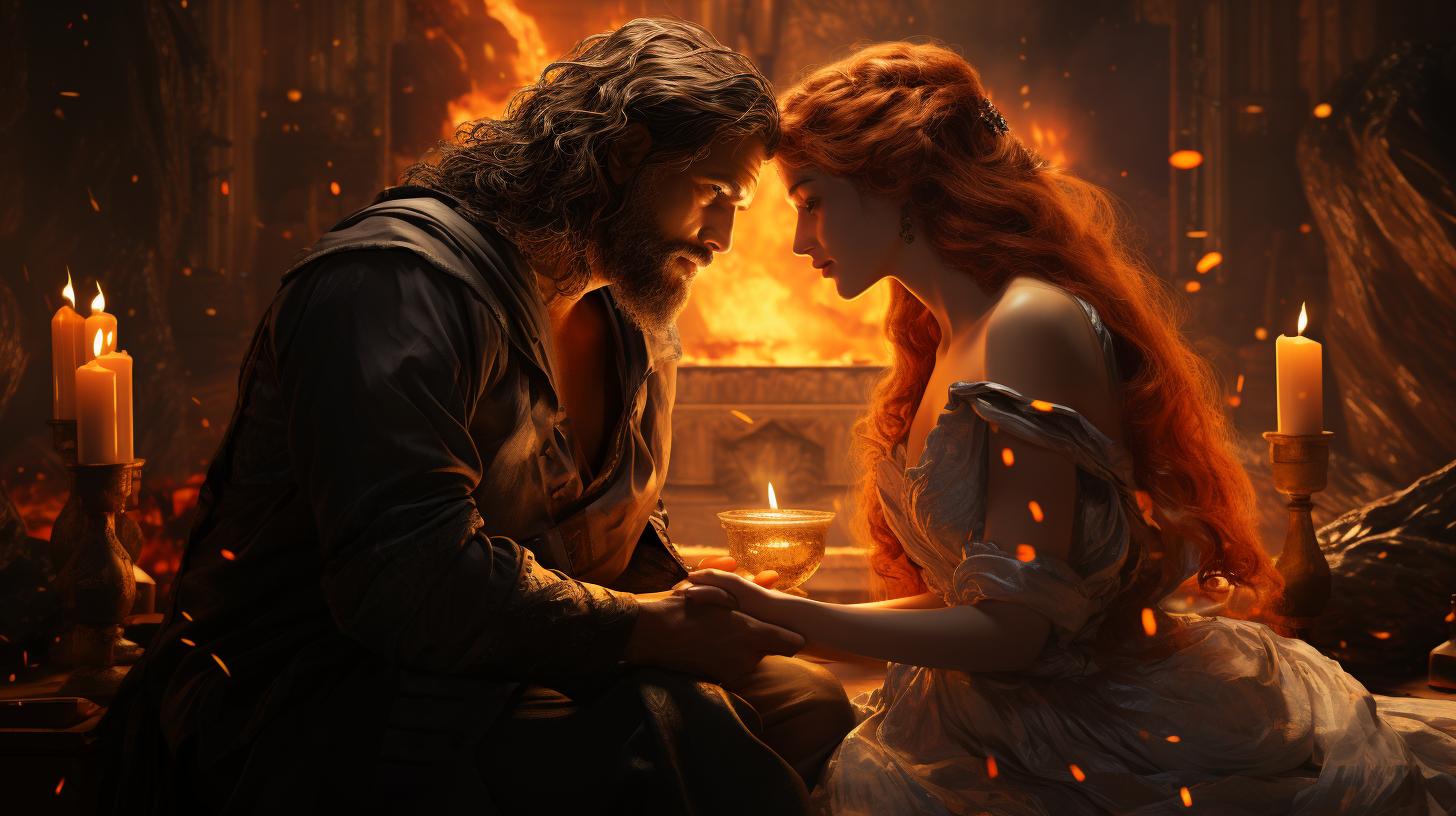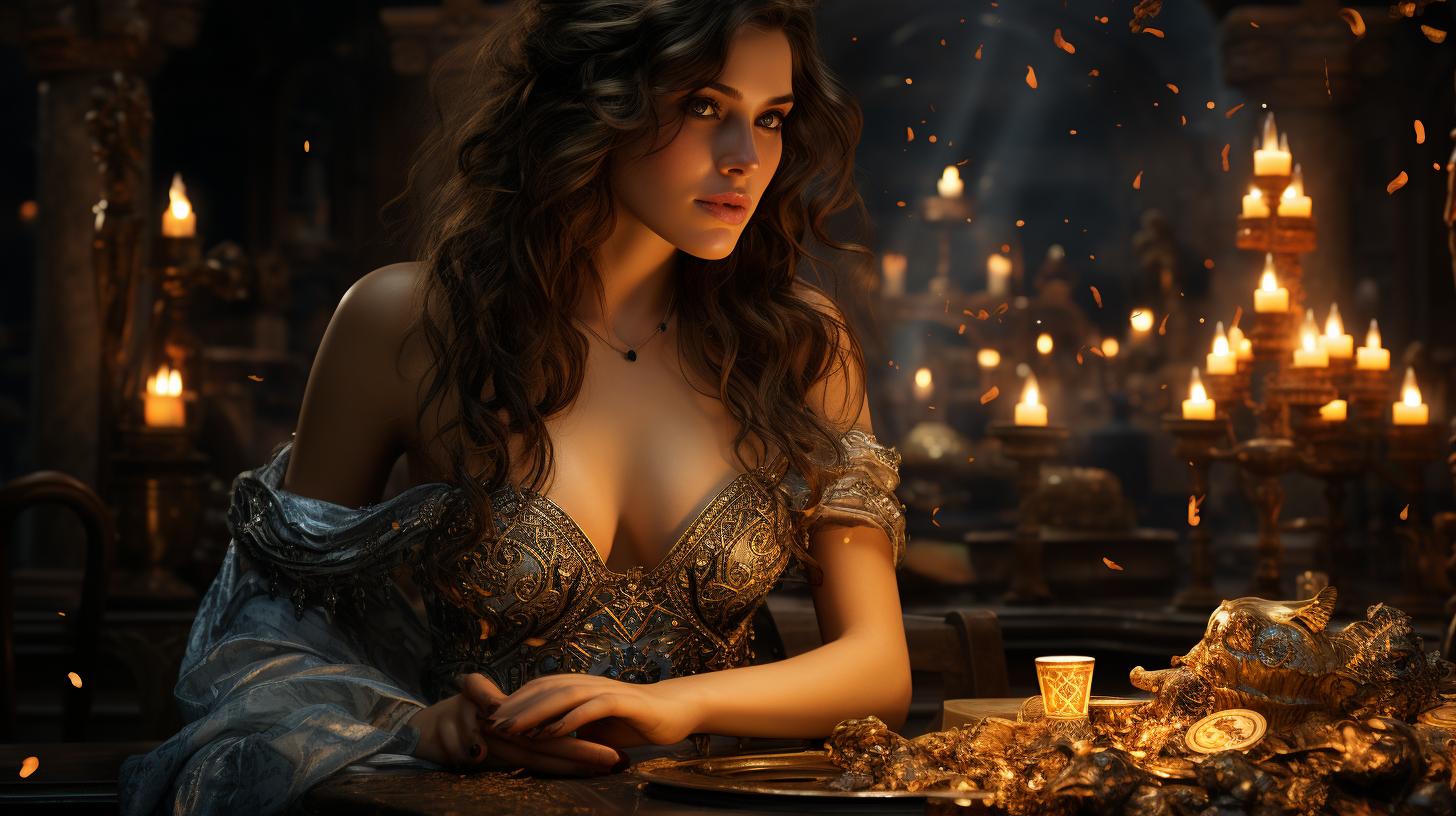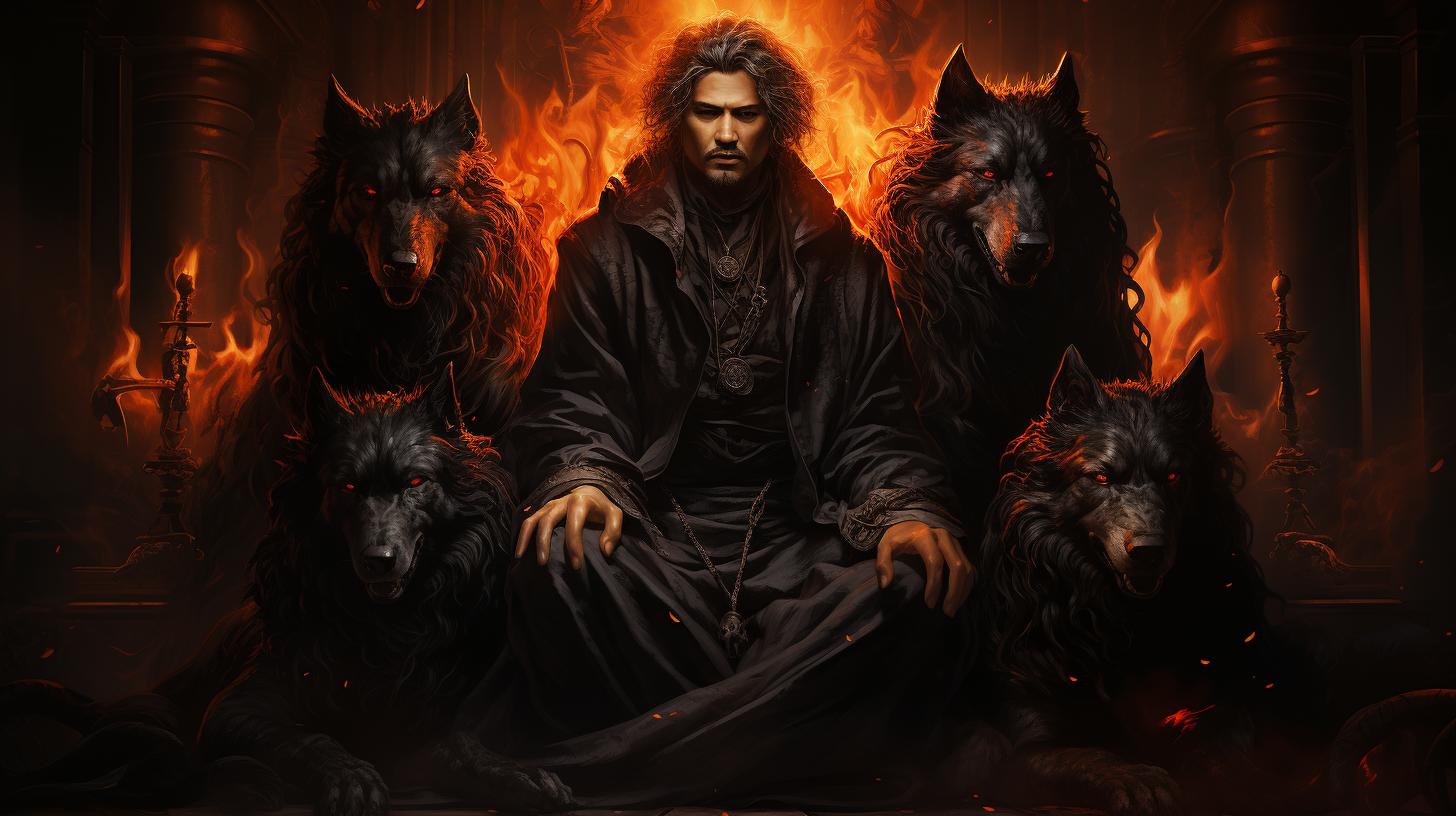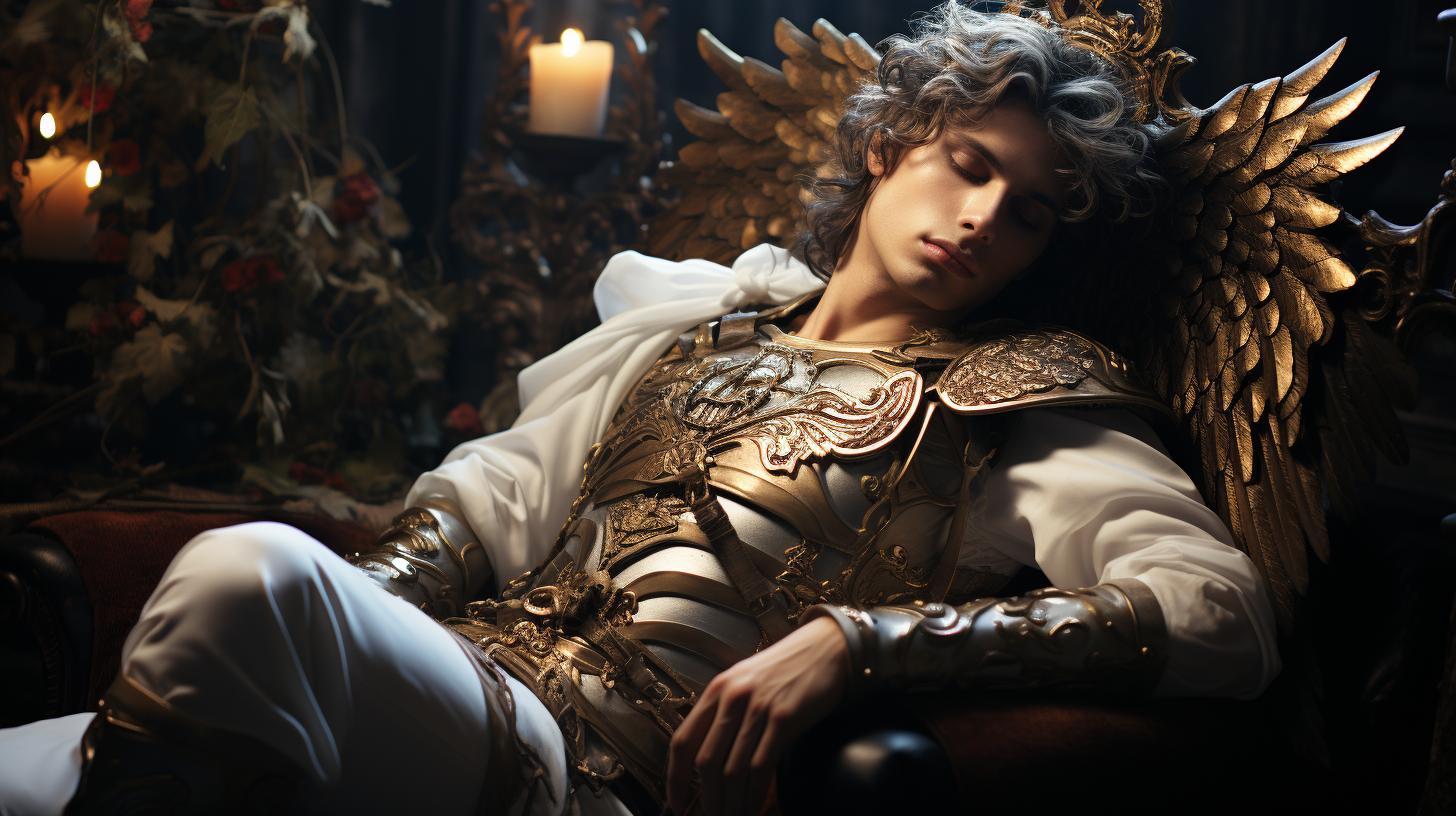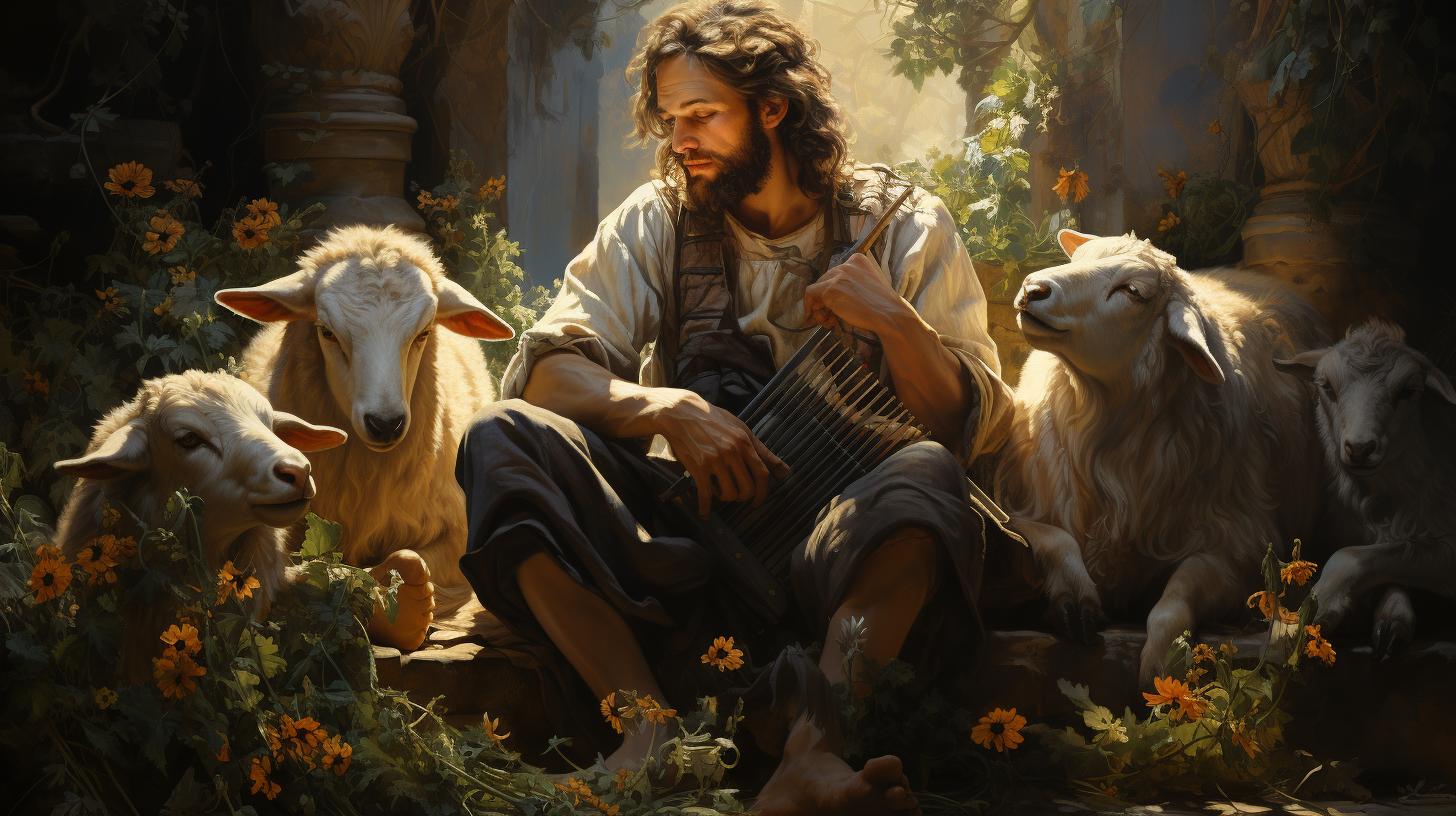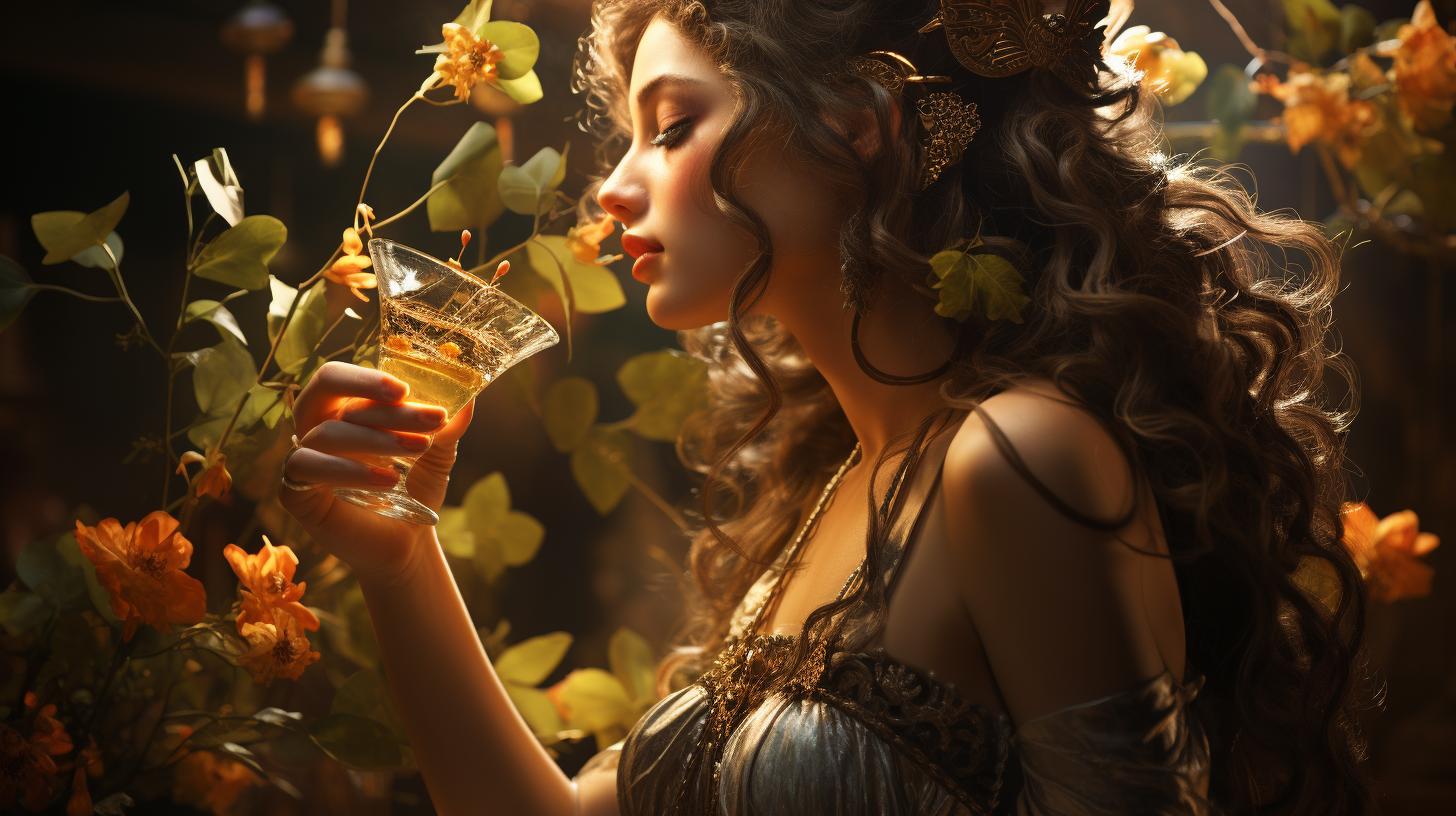The Greek God Hephaestus: A Master Craftsman and Forger of Myth and Metal

The Greek god Hephaestus, also known as Hephaestus, is a prominent figure in Greek mythology. Born lame and expelled from Mount Olympus, he was later brought back by Dionysus. With a domain that encompasses craftsmanship, metalwork, and volcanoes, Hephaestus was known for his workshop in Olympus, creating extraordinary weapons and tools for both gods and mortals.
His tumultuous relationship with Aphrodite and various encounters with other deities and mortals add to his fascinating tales. Hephaestus played a significant role in ancient Greek society, shaping mythological practices, art, and culture.
Today, his legacy continues to inspire modern interpretations in literature, pop culture, and symbolism.
The Origins of Hephaestus in Greek Mythology
The Greek god Hephaestus, also known as Hephaistos in Greek mythology, holds a significant place among the pantheon of gods. His origin story is one filled with rejection, redemption, and divine intervention, showcasing the complex relationships within the Greek gods’ family.
Hera and Zeus: The Parents’ Rejection
A central part of Hephaestus’ origin story revolves around the rejection he faced from his parents, Hera and Zeus. In various versions of the myth, Hephaestus is born lame or disfigured, which disheartens his mother, Hera, and angers his father, Zeus. Unwilling to accept a less than perfect child or fearing Hera’s wrath, Zeus casts Hephaestus off Mount Olympus.
Dionysus’ Intervention: The Return to Olympus
Fortunately for Hephaestus, his exile is short-lived. Dionysus, the Greek god of wine and revelry, plays a crucial role in Hephaestus’ return to Olympus. Dionysus retrieves Hephaestus and brings him back to the celestial realm, where he belongs.
This intervention emphasizes the interconnectedness of the gods and their ability to reconcile their differences for the greater good.
Hephaestus’ return to Olympus not only signifies his reunion with the gods but also marks the beginning of his pivotal role in Greek mythology.
From his humble beginnings as a rejected child, he embarks on a journey that would shape his destiny as the god of craftsmanship, fire, and volcanoes.
The Domain of Hephaestus: God of Craftsmanship and Fire
Hephaestus, the Greek god associated with craftsmanship and fire, held a domain that encompassed various aspects of arts, metalwork, and volcanic fire.
This section explores two significant facets of Hephaestus’ domain: his workshop and his mighty creations.
The Workshop of Hephaestus
Hephaestus had a legendary workshop located in Mount Olympus, where he dedicated his time to crafting exceptional weapons, tools, and intricate metalwork. It was within this sacred space that he showcased his unparalleled skills as a master craftsman.
Described as a grand palace, Hephaestus’ workshop was adorned with an abundance of tools, furnaces, and anvils. Flames danced and sparks flew as the god meticulously shaped metal with his trusty hammer and tongs.
An array of magical contraptions, including twenty automatic bellows, assisted him in his laborious yet rewarding work.
At Hephaestus’ side were skilled assistants known as the Cyclopes, who assisted him in forging and constructing elaborate creations.
Together, they labored tirelessly, as the sounds of clanging metal echoed throughout the workshop. This divine abode served as a testament to Hephaestus’ unparalleled craftsmanship and artistic genius.
Hephaestus’ Mighty Creations
Hephaestus’ creations were renowned for their exquisite craftsmanship and magical properties.
He crafted exceptional weapons and armor for both gods and select mortals. One of his most notable creations was the impenetrable armor and shield that adorned the legendary hero Achilles during the Trojan War.
These artifacts were not mere objects; they possessed extraordinary features. The shield of Achilles, for instance, depicted intricate and mesmerizing scenes that seemed to come to life. These animated depictions captivated all who beheld them, showcasing Hephaestus’ ability to combine both artistic beauty and practical functionality.
Hephaestus extended his artistic abilities to the creation of lifelike statues that almost mirrored actual human beings. These living sculptures showcased his mastery in capturing the essence of life within stone or metal, highlighting his unparalleled talent as a sculptor.
Throughout Greek mythology, the narratives recounting Hephaestus’ creations served to underscore his unrivaled expertise in his domain. His masterpieces embodied not only his technical prowess but also reflected the divine essence of his being.
- The Workshop of Hephaestus
- Hephaestus’ grand palace in Mount Olympus
- Equipped with tools, furnaces, and anvils
- Assisted by Cyclopes in his crafting endeavors
- Hephaestus’ Mighty Creations
- Exceptional weapons and armor for gods and select mortals
- Impenetrable armor and shield created for Achilles
- Animated depictions on Achilles’ shield
- Lifelike statues showcasing mastery in the art of sculpture
Hephaestus in Greek Legends and Epics
In Greek mythology, Hephaestus, the mighty god of craftsmanship, played significant roles in several legends and epic tales.
His presence and actions in these stories shed light on his immense power and influence.
Hephaestus’ Role in the Iliad
In the epic poem The Iliad, Hephaestus wields his exceptional skills to aid the Greek forces during the Trojan War. When Achilles’s armor is taken by Hector, Hephaestus crafts a magnificent new set of armor that surpasses any other.
The gleaming shield he creates becomes a symbol of strength and protection for Achilles as he battles against the Trojans.
Additionally, Hephaestus answers the prayers of Thetis, Achilles’s mother, and bestows divine armor upon her son.
This gift enhances Achilles’s invincibility and contributes to the epic tale of heroism and warfare.
Hephaestus’ Presence in the Odyssey
The iconic epic, The Odyssey, also features Hephaestus in various episodes. One notable instance is when Odysseus and his men encounter the Cyclops Polyphemus, who is the son of Hephaestus. The crafty hero uses his wit and intelligence to blind the Cyclops, thus gaining an advantage through his association with the all-powerful god of craftsmanship.
Furthermore, in his journey back to Ithaca, Odysseus seeks guidance from Hephaestus in the underworld. The god shares his wisdom and offers invaluable advice, aiding Odysseus in overcoming numerous obstacles on his arduous voyage home.
Hephaestus, with his divine powers and presence in these epic tales, illustrates the depth of his significance in ancient Greek storytelling. His interventions and contributions shape the narrative and showcase his prowess as a key figure in Greek mythology.
Relationships and Romances of Hephaestus
Relationships and romantic entanglements played an intriguing role in the life of Hephaestus, the Greek god of craftsmanship and fire. From his challenging relationship with Aphrodite to encounters with other divine and mortal beings, Hephaestus’ love life was a complex and captivating subject in Greek mythology.
Hephaestus and Aphrodite: A Challenging Relationship
One of the most well-known relationships of Hephaestus was with the goddess of love and beauty, Aphrodite. Despite their stark differences, including Hephaestus’ physical deformity and Aphrodite’s exquisite beauty, they were married in an arranged union on Mount Olympus.
Hephaestus loved Aphrodite deeply, but their relationship was far from harmonious. Aphrodite was not faithful to Hephaestus and engaged in numerous affairs with both gods and mortals alike. This betrayal caused immense heartache and resentment for Hephaestus.
Yet, despite the challenges, their relationship had its complexities. Hephaestus was often depicted as a devoted husband, showering Aphrodite with magnificent gifts and luxuries. Their union, although troubled, symbolized the intricate dynamics and conflicts that can exist even among divine beings.
Other Divine and Mortal Encounters
Beyond his relationship with Aphrodite, Hephaestus had other notable encounters and romances. His craftsmanship and allure drew several goddesses and mortal women to him.
- Athena: Hephaestus had a notorious encounter with the goddess of wisdom, Athena. In a moment of passionate desire, Hephaestus attempted to pursue Athena, but she resisted and repelled his advances.
- Aglaea: One of Hephaestus’ romantic involvements was with Aglaea, one of the three Graces.
Their relationship symbolized the fusion of beauty and craftsmanship, as Aglaea represented beauty and splendor.
- Other Divine and Mortal Affairs: Hephaestus’s captivating persona and artistic skills also attracted the attention of other goddesses and mortal women, each adding their own chapter to the intricate tapestry of his love life.
These encounters and romances showcase the complexities and nuances of love, desire, and relationships that existed in the realm of Greek mythology, providing fascinating insights into the character of Hephaestus.
The Significance of Hephaestus in Ancient Greek Society
The Greek god Hephaestus, also known as Hephaistos, played a crucial role in ancient Greek society, particularly in mythological and religious practices, as well as in art and culture.
Hephaestus’ Role in Mythological and Religious Practices
In Greek mythology, Hephaestus was revered as the god of craftsmanship, metalwork, and fire.
His exceptional skills in forging and his association with fire made him highly respected among the gods and mortals.
Hephaestus’ role in mythological practices was significant. He was often invoked by artisans and craftsmen who sought his guidance and inspiration in their creative pursuits.
Temples and sanctuaries were dedicated to him, where people would offer prayers and tributes to seek his favor and blessings.
Hephaestus’ Influence in Art and Culture
As the god of craftsmanship, Hephaestus had a remarkable influence on art and culture in ancient Greece. His mastery of metalwork and sculpture inspired countless artists and artisans throughout the ages.
His iconic creations, such as the shield and armor of the hero Achilles, displayed not only exceptional craftsmanship but also symbolic representations that brought stories and myths to life. These artifacts became revered symbols of power and protection.
Hephaestus’ statues, known as automatons, were remarkable works of art that resembled real people. These lifelike statues showcased the skills and artistry of the ancient Greek sculptors, elevating the standards of the craft and leaving a lasting impact on the artistic traditions of the era.
- Hephaestus’ influence extended beyond sculpture. He was believed to have a role in the creation of cities, being associated with the founding and organization of urban centers.
- His presence was often invoked in ceremonies that marked the establishment and admission of individuals into the community, highlighting his significance in societal structures.
In summary, Hephaestus’ role in ancient Greek society was multifaceted.
As the god of craftsmanship and fire, he was revered in mythological and religious practices, and his influence left an indelible mark on the art and culture of the time.
Modern Interpretations and Representations of Hephaestus
In modern times, the compelling figure of Hephaestus continues to captivate the imagination of artists, writers, and creators. His complex persona and domain of craftsmanship have found their way into different forms of artistic expression and popular culture.
Hephaestus in Literature and Pop Culture
Hephaestus has frequently appeared in various literary works, both as a central character and as a source of inspiration. His struggles as an outcast and his ingenuity as a craftsman have resonated with authors across different genres.
For instance, in Rick Riordan’s popular book series, “Percy Jackson and the Olympians,” Hephaestus plays a prominent role as a divine inventor and a member of the Olympian council.
- Hephaestus’ character is also explored in classical literature, such as in the plays of ancient Greek playwrights like Aeschylus and Euripides.
- His story has influenced works of science fiction and fantasy, where divine forging abilities and creative prowess are often featured.
- In comic books and graphic novels, Hephaestus often appears as a formidable presence, with his mastery of metalwork and his relationship with other deities providing rich storytelling material.
The Legacy of Hephaestus in Contemporary Society and Symbolism
Hephaestus’ enduring legacy can be seen beyond the pages of literature and the screens of popular media.
His association with craftsmanship and industry continues to shape contemporary society and symbolism.
- Hephaestus’ name is often evoked in conversations about skilled craftsmen, engineers, and artisans who excel in their respective fields.
His dedication to his craft serves as an inspiration for those striving for excellence.
- His symbols, such as the anvil and hammer, have become iconic representations of skilled labor and craftsmanship.
- Hephaestus’ inclusion in the pantheon of Greek gods also resonates with enthusiasts of mythology and ancient history, who find fascination in exploring his multifaceted character and stories.
As we continue to navigate the complexities of the modern world, Hephaestus’ influence remains palpable, reminding us of the power of creativity, resilience, and the pursuit of mastery in our own endeavors.
.











